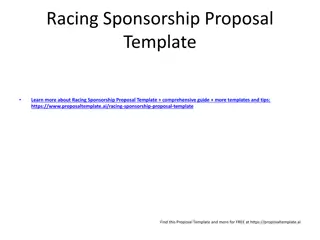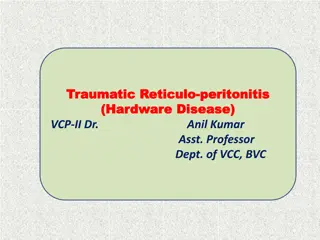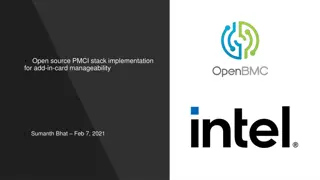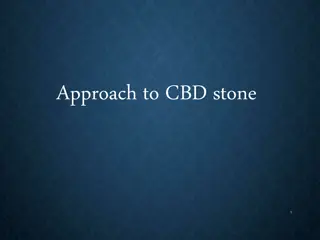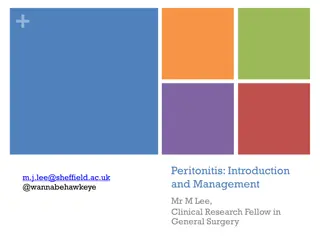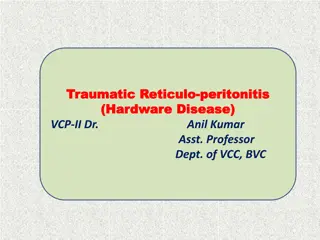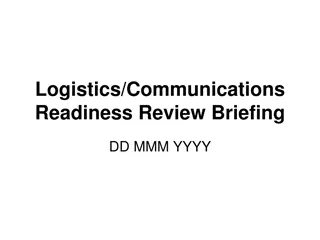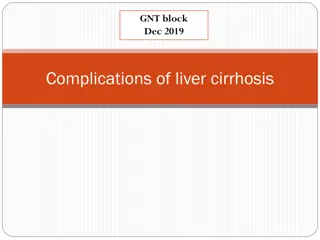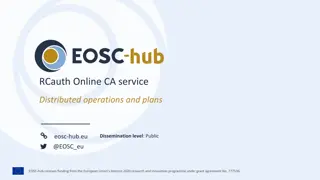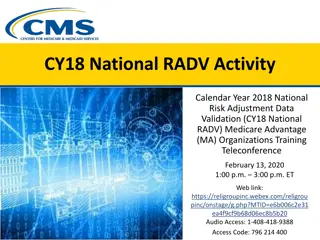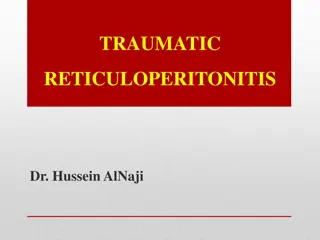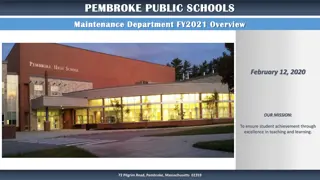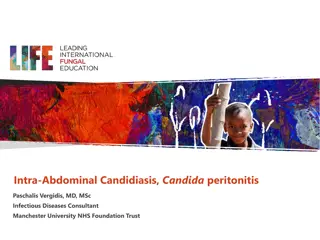Overview of Choledocholithiasis and Peritonitis
Choledocholithiasis refers to gallstones in the common bile duct, which can lead to complications like peritonitis. Explore the causes, manifestations, diagnosis, and management of these conditions as discussed in a nursing college presentation.
Download Presentation

Please find below an Image/Link to download the presentation.
The content on the website is provided AS IS for your information and personal use only. It may not be sold, licensed, or shared on other websites without obtaining consent from the author.If you encounter any issues during the download, it is possible that the publisher has removed the file from their server.
You are allowed to download the files provided on this website for personal or commercial use, subject to the condition that they are used lawfully. All files are the property of their respective owners.
The content on the website is provided AS IS for your information and personal use only. It may not be sold, licensed, or shared on other websites without obtaining consent from the author.
E N D
Presentation Transcript
CHOLEDOCHOLILI THIASIS MR. DINESH SINGH P.G. NURSING TUTOR ROHILKHAND COLLEGE OF NURSING 10-03-2025 ROHILKHAND COLLEGE OF NURSING 1
OBJECTIVES Introduction of the Peritonitis. Define the Peritonitis. Explain the causes of Peritonitis. State the clinical manifestations of Peritonitis. Elaborate the diagnostic evaluation of Peritonitis. Discuss the management of Peritonitis. Describe the prevention of Peritonitis. 10-03-2025 ROHILKHAND COLLEGE OF NURSING 2
INTRODUCTION Choledocholithiasis is when you have a gallstone in your common bile duct. That s the duct that carries bile from your gallbladder. Gallstones in this narrow passageway pose a risk of obstructing the flow of bile. An obstruction can cause pain, inflammation and serious complications. 10-03-2025 ROHILKHAND COLLEGE OF NURSING 3
DEFINITION 10-03-2025 ROHILKHAND COLLEGE OF NURSING 4
ETIOLOGY Liver to make too much cholesterol Liver to make too much bilirubin Gallbladder does not empty correctly Cirrhosis of liver Biliary tract infections 10-03-2025 ROHILKHAND COLLEGE OF NURSING 5
RISK FACTORS Obesity Low-fiber, high-calorie, high-fat diet Pregnancy Prolonged fasting Rapid weight loss Lack of Physical activity 10-03-2025 ROHILKHAND COLLEGE OF NURSING 6
CLINICAL MANIFESTATION Abdominal pain Fever Jaundice Loss of appetite Nausea and vomiting Clay-colored stools 10-03-2025 ROHILKHAND COLLEGE OF NURSING 7
DIAGNOSTIC EVALUATION History collection Physical examination Trans-abdominal ultrasound: an imaging procedure that uses high-frequency sound waves to examine the liver, gallbladder, spleen, kidneys, and pancreas. Endoscopic retrograde cholangiography: A procedure used to identify stones, tumors, and narrowing in the bile ducts Percutaneous transhepatic cholangiogram (PTCA): An X-ray of the bile ducts 10-03-2025 ROHILKHAND COLLEGE OF NURSING 8
CONTI Complete blood count Bilirubin Pancreatic enzymes Liver function tests 10-03-2025 ROHILKHAND COLLEGE OF NURSING 9
MANAGEMENT SURGICAL MANAGEMENT Stone extraction Cholecystectomy: Surgery to remove the gallbladder and stones. Sphincterotomy: Surgery that makes a cut into the common bile duct to remove stones or help them pass. Biliary stenting 10-03-2025 ROHILKHAND COLLEGE OF NURSING 10
Fragmenting stones (lithotripsy) Extracorporeal shock wave lithotripsy is a procedure to break up stones inside the urinary tract, bile ducts or pancreatic duct with a series of shock waves generated by a machine called a lithotripter. 10-03-2025 ROHILKHAND COLLEGE OF NURSING 11
10-03-2025 ROHILKHAND COLLEGE OF NURSING 12
SUMMARY 10-03-2025 ROHILKHAND COLLEGE OF NURSING 13
REFERENCES 10-03-2025 ROHILKHAND COLLEGE OF NURSING 14
10-03-2025 ROHILKHAND COLLEGE OF NURSING 15





